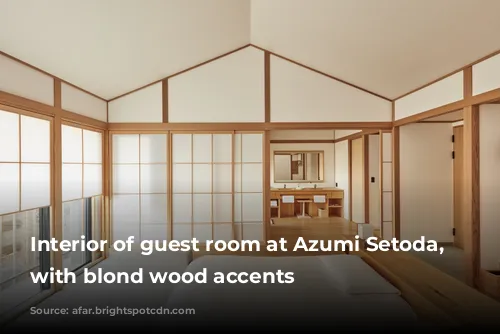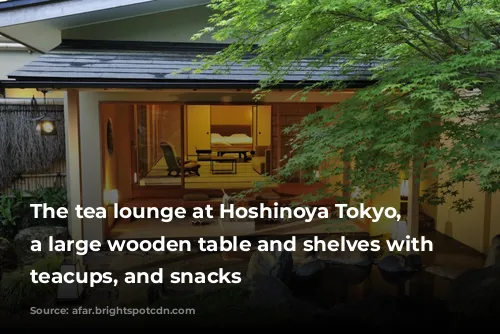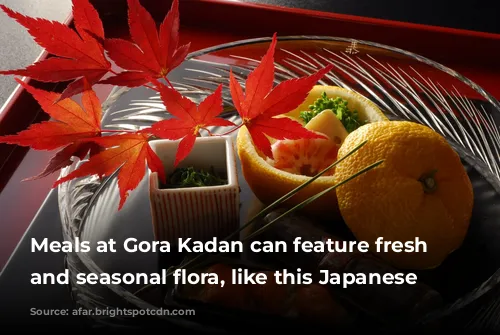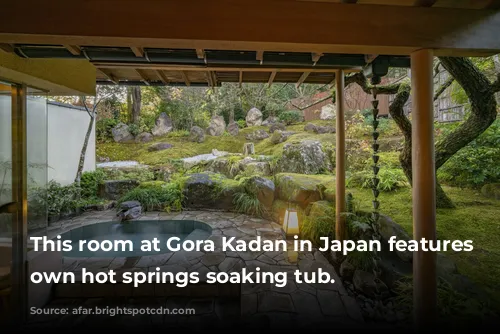Stepping into a ryokan is like stepping into a world of ancient Japanese customs and hospitality. My first experience was over 20 years ago, during my time in northern Japan. My colleagues took me to a ryokan nestled in the mountains, and while I was captivated by the serene atmosphere, I was also quite surprised! What exactly was a ryokan, and why did it feel so different from any hotel I’d ever experienced?

Beyond a Hotel: The Essence of Ryokan Culture
The truth is, a ryokan is far more than just a hotel with a traditional Japanese design. It’s a cultural immersion, an experience steeped in centuries-old traditions and etiquette. These inns are not just places to rest; they’re destinations in their own right, drawing guests in with their captivating designs, calming ambiance, exceptional food, and rich history.

Embracing the Unique Experience: Key Aspects of Ryokan Life
Think of a ryokan as a luxurious bed-and-breakfast, but with a cultural twist that might feel similar to staying in a historic castle in another part of the world. The key difference is the emphasis on food. Ryokan are deeply rooted in the tradition of offering travelers a nourishing meal and a comfortable place to rest before continuing their journeys. So much so, that even skipping dinner is considered poor etiquette.
But what makes a ryokan truly special is the way it embraces the simple beauty of Japanese design. Expect elegant minimalist rooms with tatami flooring, fusuma paper screens and sliding doors, and low tables and cushions for sitting on the floor. Sleeping in a ryokan is an experience in itself. You’ll be provided with a comfortable futon mattress laid out directly on the tatami, a fluffy duvet, and a pillow filled with sobagara—dried soba husks. While some might find the sobagara pillow a bit firm, it’s part of the traditional experience.

Navigating Ryokan Etiquette: A Gentle Guide for First-Timers
Ryokan etiquette is unique, but not intimidating. In recent years, modern ryokan have emerged, blending traditional practices with hotel-style amenities to make the experience more familiar for international travelers.
One key rule is leaving your shoes at the entrance. You’ll notice guests wearing yukata, kimono-like robes, throughout the ryokan, whether they’re enjoying breakfast, heading to the baths, or even strolling around the town. Embrace the tradition and wear your yukata. It’s all part of the ryokan experience!
Ryokan are a retreat from the hustle and bustle of urban life, encouraging guests to slow down and unwind. A sense of calmness permeates the ryokan atmosphere. Be mindful of this peaceful vibe and speak softly, especially in common areas, to maintain the tranquil ambiance.

The Ritual of Oneness: Exploring the Ryokan Baths
For many Japanese travelers, a key highlight of a ryokan stay is the opportunity to enjoy the onsen, a traditional hot spring bath. These baths can be communal or private, filled with natural hot spring onsen water or enriched with healing minerals. The experience is truly unique and deeply relaxing, but remember that there are specific rules for bathing in onsen.
A Gesture of Appreciation: Tipping and Other Considerations
While tipping is not customary in Japan, it’s considered polite to leave a small tip for your nakai-san at a ryokan. The nakai-san, often likened to a butler, will help you settle into your room, lay out your bedding, and assist with any needs during your stay. A tip of between 3,000 and 5,000 yen (around US$20 to US$33) is customary, depending on the ryokan’s class.
If you have tattoos, be aware that some traditional ryokan may restrict access to communal baths due to long-standing cultural stigmas. However, many newer ryokan are relaxing this rule, and private baths are always an option.
Travelers with mobility issues or back problems may find traditional Japanese rooms with futons and floor seating a bit challenging. Many ryokan now offer Western-style beds and higher tables, making the experience more comfortable for guests who prefer a Western-style setup.
Unveiling the Beauty of Japan: Recommended Ryokan Experiences
From luxurious imperial villas to sleek modern retreats, Japan offers a diverse range of ryokan experiences. Here are a few recommendations to inspire your journey:
- Gora Kadan: Nestled within a former imperial summer villa, this luxurious ryokan boasts striking architecture, stunning gardens, and 41 rooms, some with private outdoor baths.
- Hoshinoya Tokyo: This contemporary ryokan blends modern design with traditional elements, featuring 84 rooms with tatami floors, ikebana flower arrangements, and a remarkable open-roofed outdoor bath.
- Yoshida-Sanso: Housed in an imperial residence from the 1930s, this ryokan blends classical Japanese architecture with art deco touches, offering breathtaking views of Kyoto’s eastern mountains.
- Kayotei: This cozy 10-room ryokan draws visitors with its exceptional kaiseki cuisine prepared with seasonal ingredients from local farmers and producers. The onsen waters are also a highlight, best enjoyed in one of the outdoor rotenburo baths.
- Houshi: This historic ryokan boasts a legacy spanning 1,300 years, attracting travelers seeking the healing powers of its onsen waters. Guests can indulge in spacious tatami-floored suites and savor seafood-centric kaiseki dinners.
- Notoya: Located in the enchanting Ginzan Onsen village, this charming ryokan is one of the oldest in the area, offering a perfect immersion in traditional customs and therapeutic waters.
- Azumi Setoda: This 140-year-old family estate features comfortable beds, cypress bathtubs, shoji screens, and hyper-local cuisine made with French techniques. Guests can also visit the community bath house, Yubune, located just across the street.
A ryokan stay is a unique and unforgettable journey into the heart of Japanese culture. It’s a chance to embrace ancient traditions, experience the serenity of Japanese hospitality, and create memories that will last a lifetime.

